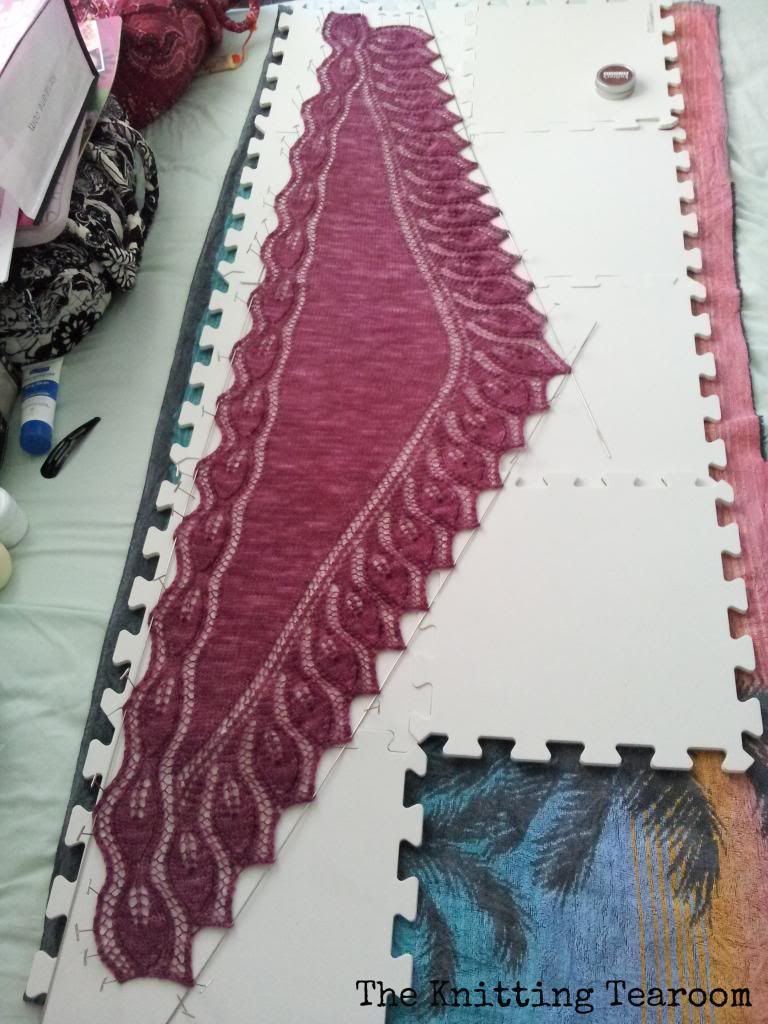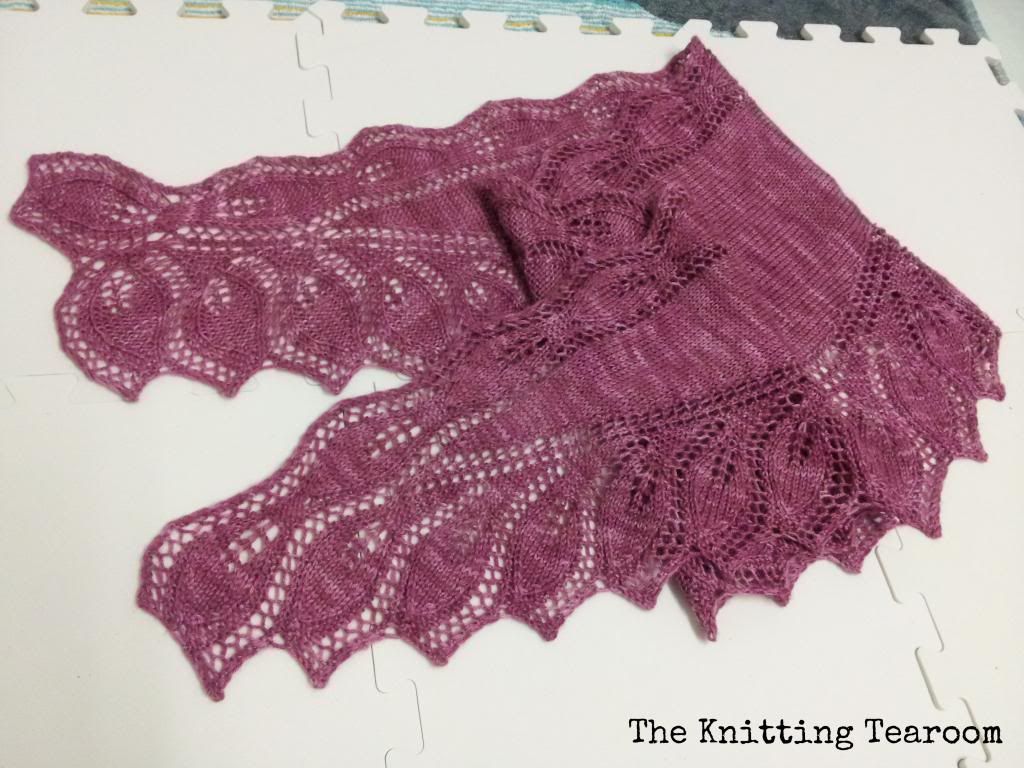Before:
I actually thought that it looked quite pleasing even before blocking.
 |
| Before blocking |
 |
| Wet blocking |
I don't enjoy the blocking process at all, because I never seem to have enough T-pins when I need them, and I am quite impatient. I find myself checking the blocked item for dryness very frequently. With this one, I actually put a sheet of cotton over the top, in an attempt to help soak up any excess water, and waved a hairdryer, on the cool air setting, over it. Several times over the course of the day. However, despite disliking this process, it is a step I would never dream of skipping, especially for lace items. Blocking works like magic on lace. I was so impressed by how it transformed my shawlette. Looking back at pictures of the unblocked form, which I had initially thought was attractive enough, it actually just looked like a fancy dishrag, compared to this beauty that lay before me.
Photo-shooting time!
Blocking not only opened up the lacework, but also relaxed the fibre and improved the overall drape and feel of the fabric.
 |
| ...et Voilà! (after blocking) |
Photo-shooting time!
Blocking not only opened up the lacework, but also relaxed the fibre and improved the overall drape and feel of the fabric.
This shawlette version of the pattern, which was knitted in sock-weight yarn, is still large enough to wrap around the shoulders once. You could also wear it like a scarf, but I don't really like scrunching it together too much, lest I should have to block it again soon to get the creases out or to regain the proper shape.
Alternatively, you could just drape it casually over your shoulders, which is my favourite way of wearing it. It shows off the lace best, and adds a nice, romantic touch to any outfit. Well, I think so, anyway.
This is definitely the start of shawl-knitting obsession for me. In fact, I have already bought the yarn to knit another one of this clever designer's shawl patterns. Now all I have to do is finish winding the skeins of lace-weight yarn into balls…… (I dislike this more than blocking, which is why the first skein has been sitting in my knitting bag, part-wound to my nostepinne, for a couple of months already. Having a yarn swift doesn't help. I really need to invest in a yarn winder.)
About the Semele knitting pattern itself, it's really well- and clearly written, and teaches an ingenious cast-on method. It took me a few goes to get my head - and hands - around it, but once I got it, I realised it was actually quite straight-forward. Speaking of which, it's probably time that I revisited it, lest I should forget such a useful technique. I can definitely see myself knitting more variations of this shawlette through my knitting life.
Here's the link to the pattern on Ravelry, if you're interested in knitting this gorgeous shawlette yourself: http://www.ravelry.com/patterns/library/semele-2
Knit on! x







No comments:
Post a Comment